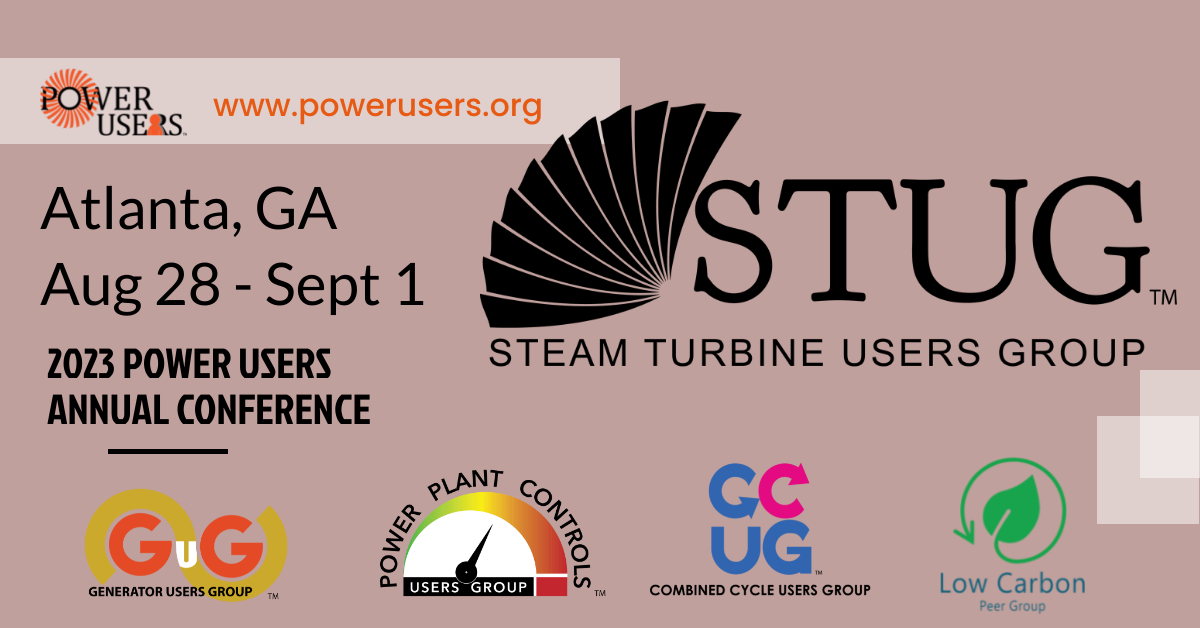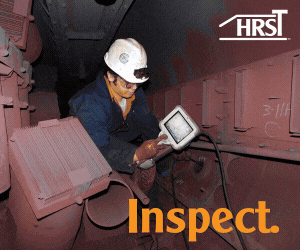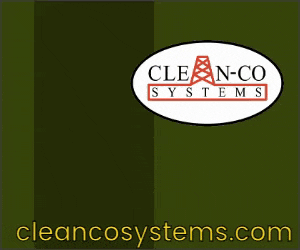With the 2023 Steam Turbine Users Group (STUG) approaching August 28-31 in Atlanta, part of the greater Power Users Combined Conference, reviewing some of the content from last year’s meeting should encourage you to attend or send someone from your organization to experience this valuable content in person. Presentation abstracts below are based on information available only to end users in the slide decks posted at www.powerusers.org. Those seeking deeper dives into specific topics should note the presentation titles in italics at the end of each summary and access the source material on the website.
Cut L-0 blade damage repair costs in half
David Archambeault, EthosEnergy Group, told STUG attendees that they can cut costs of damaged L-0 ST/G blades by 40% to 50% using in-situ repair techniques rather than by replacing blades. The slides take you through repair case studies of the most common damage mechanisms—water-droplet erosion (Fig 6), foreign object damage, and cover or tenon cracking.
“In-situ Repair and Upgrade of L-0 Steam Turbine Blades”
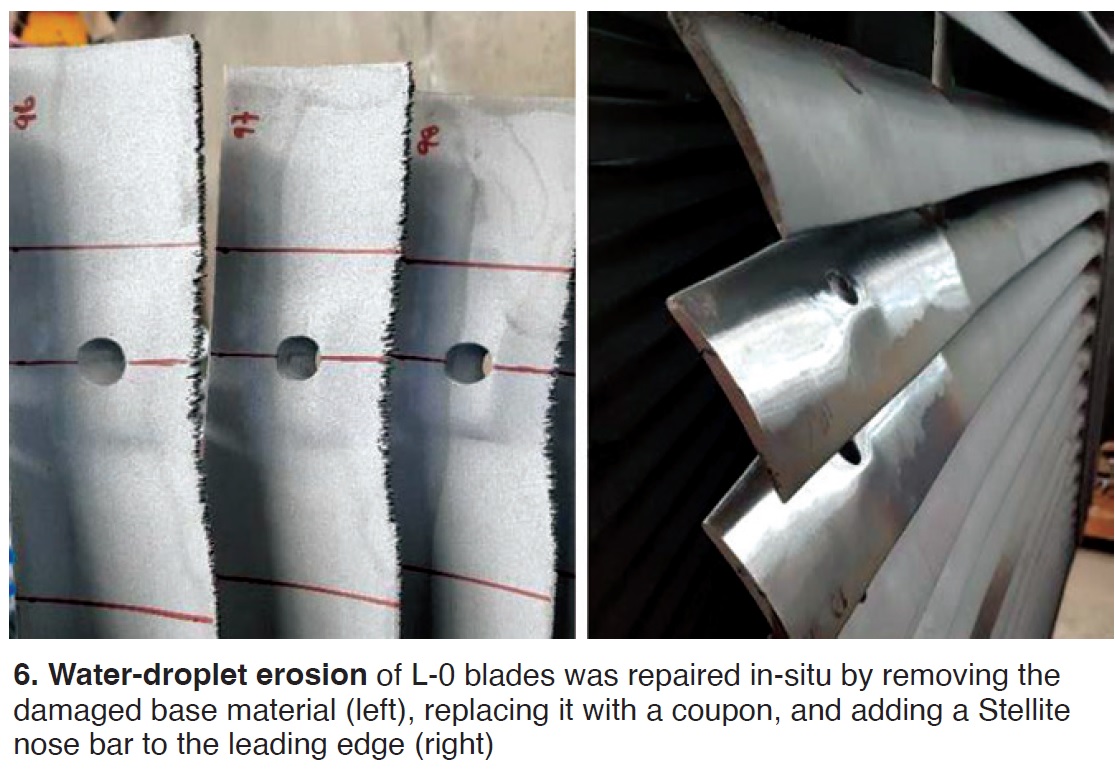
Consider PAG fluids for EHC, lubrication
The theory of the case presented here is that polyalkalene glycol fluids (PAG) are superior to phosphate esters in electrohydraulic control (EHC) applications and to petroleum-based oil (mineral) for lubrication. Paul Jarvis, Oilkleen, explains that in EHC systems, PAG fluids exhibit hydrolytic stability, meaning they will not degrade when exposed to water contamination. In lube-oil systems, PAG fluids can eliminate varnish formation. Photos supplied of reservoirs after years of service with PAG are dramatically cleaner than with alternatives.
“Keys to a Successful Conversion”
Cycling damage illustrated—and remedied
A plethora of ST/G cycling damage/failure mechanisms and major structural repairs are discussed and illustrated in a set of slides from Brian Grant, Advanced Turbine Support. While most are focused on the L-0 stage, low-pressure section diaphragm nozzles and moisture drains and high-pressure packing gland seals also get attention (Fig 7). Closing words of advice: Do not rely only on info supplied by the OEM when planning repairs or assessing contingencies.
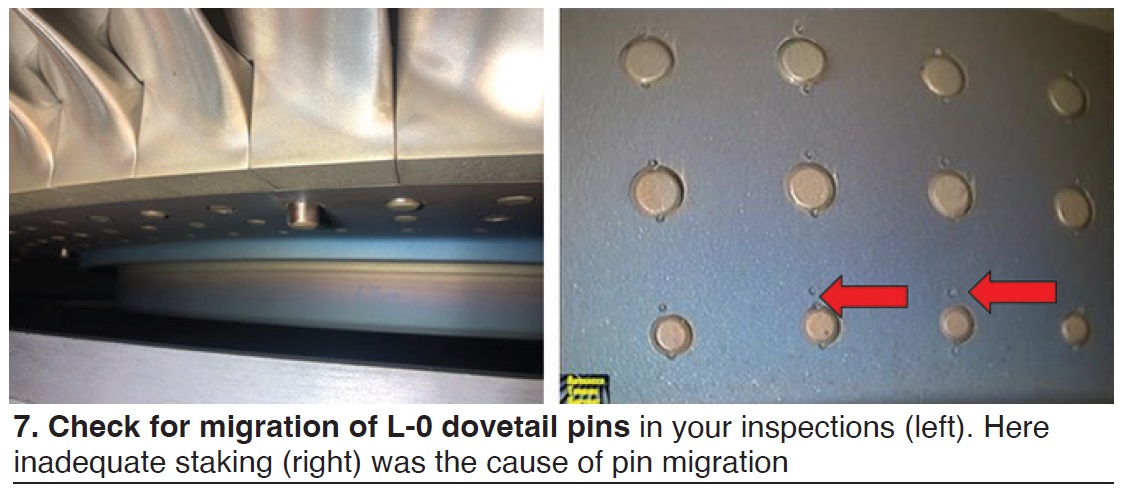
Integrated monitoring lowers EFOR, cost per kilowatt-hour
The potential benefits of a comprehensive asset management and equipment reliability program, anchored by an integrated monitoring platform, are clear in at least four cases involving large power companies (Fig 8). So says David Bramhall, Cutsforth, who led the audience through a description of the company’s InsightCM™ monitoring platform, with a focus on vibration and electromagnetic interference (EMI).
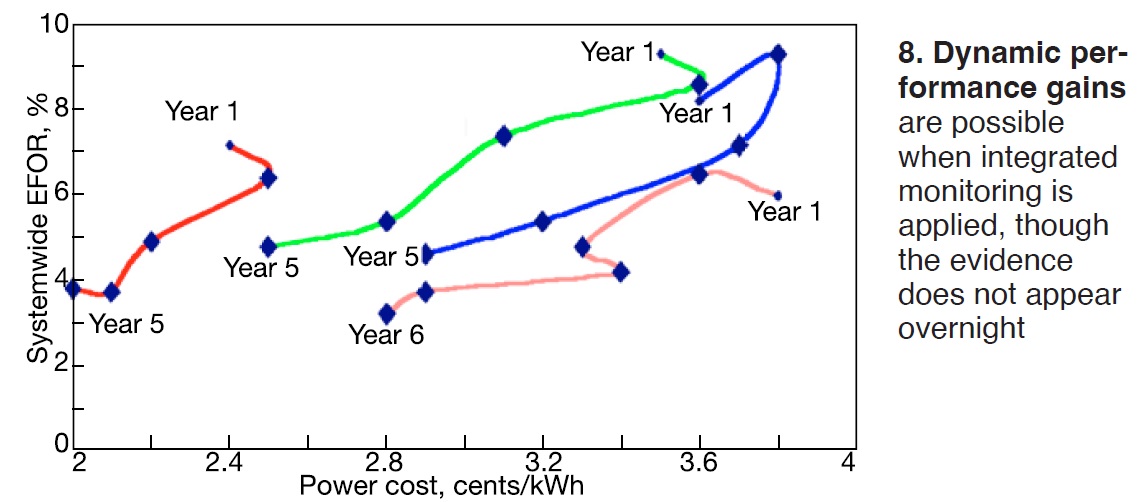
An eye-popping result at one plant: After putting together a list of equipment to inspect during an outage based on EMI readings, one plant added the isolated phase bus, not originally on the outage target list. Subsequently, 13 insulators were discovered to have moisture damage, which would likely have led to a forced outage in the near future.
“An Integrated Monitoring Platform Approach”
Poor maintenance, ops aggravate valve issues
Dennis Watson, Independent Turbine Consultants, had some pretty stark words and observations for the STUG audience. Valve maintenance is a basic aspect of ST/G upkeep but is being neglected, he said. Most plants in his experience are not properly matching temperatures during starts and stops, aggravating oxide buildup.
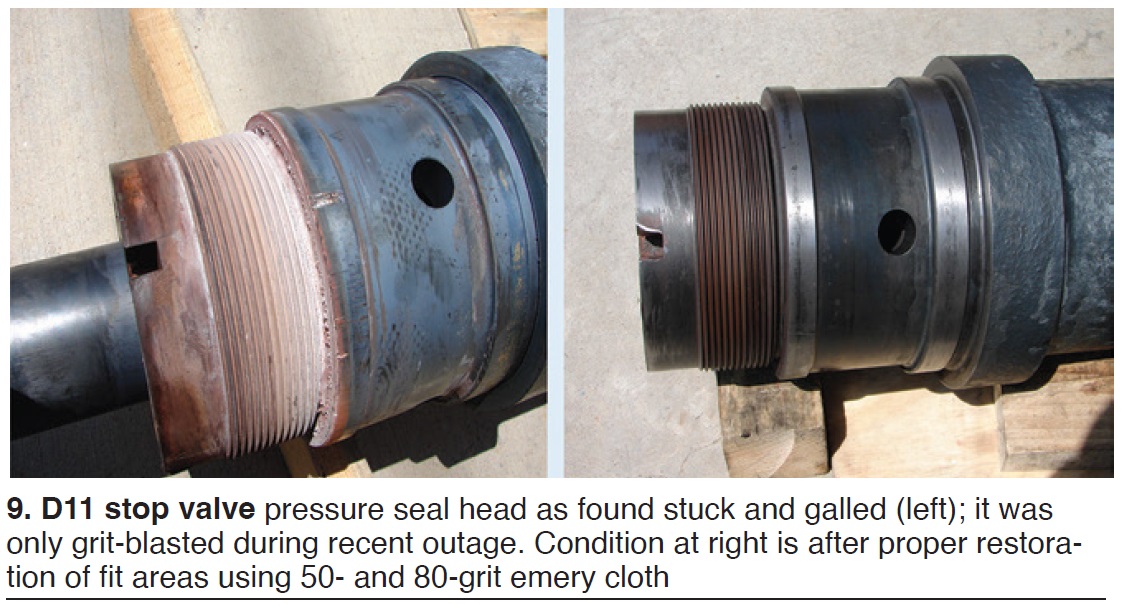
Most germane to his presentation, though, is that when valve vendors tell users that oxide cleaning is “extra” cost, they interpret that as “optional” even though “80% of valve-stem sticking problems are caused by high-temperature oxides and inadequate removal when “cleaned.” And grit blasting does not clean valve surfaces, it only polishes them. Check out the slides to learn how to do better—such as applying honing techniques with 50 and 80 grit Emery cloth for deeper cleaning of critical components (Fig 9) and try bar tests to check balance chamber concentricity to the valve-stem bushing.



